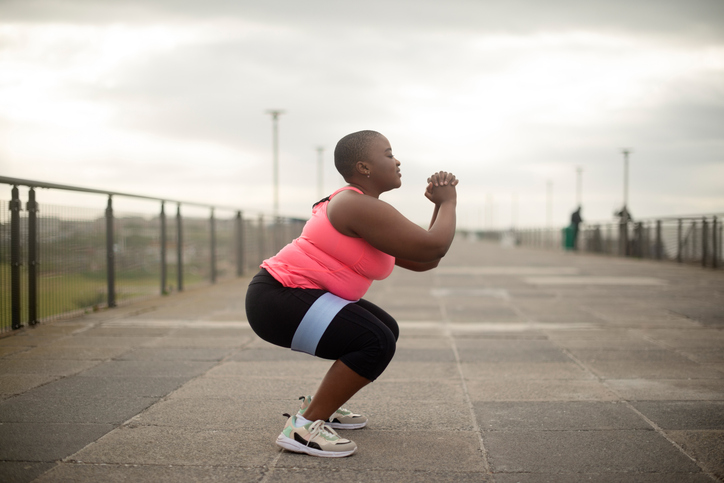courtesy of beachbodyondemand.com
In homes and gyms across our nation, the squat remains a cornerstone exercise for Americans dedicated to maintaining their health and physical strength. Yet, amidst the variety of workout routines, a pivotal question stands: What is the correct squat depth? This inquiry is not just about technique; it’s about safeguarding our bodies while optimizing our fitness results, ensuring that every American can continue to live vigorously and freely.
ANALYSIS: The Ideal Depth for Effective Squatting
For the average American, not contending in professional powerlifting, the advice is clear: squat as deeply as your body comfortably allows without compromising your form. This advice comes from Carol Mack, D.P.T., C.S.C.S., a respected authority in physical therapy and strength conditioning. Mack stresses that a deeper squat engages muscles more fully and enhances strength across a broader range of motion, essential for both athletic pursuits and daily life activities.
However, individual factors such as existing knee, hip, or ankle conditions, and personal mobility levels, will dictate one’s squat depth. This personalized approach ensures that each American can pursue fitness without risking injury, honoring their body’s unique capabilities and limitations.
DEBUNKING MYTHS: Knee Alignment in Squats
The longstanding myth that knees should never pass the toes during a squat is addressed head-on. Mack clarifies that in deeper squats, especially within powerlifting exercises, knees extending beyond toes is a natural movement. The emphasis should instead be on avoiding pain and listening to one’s body to gauge the appropriate depth. She also offers a practical tip: ensuring knee alignment with the middle two toes to maintain form and prevent injury.
STRATEGIES FOR IMPROVEMENT: Enhancing Squat Depth
For those struggling to achieve a deeper squat, Mack provides three key strategies: focusing on hip mobility, increasing ankle flexibility, and strengthening the core. Each element plays a crucial role in not only improving squat depth but also in reducing injury risk and enhancing overall movement quality. These strategies are not just about improving a single exercise but about fostering a more active, injury-free lifestyle for all Americans.
1. Hip Mobility Is Crucial
Emphasizing hip mobility can significantly impact squat depth. By adjusting the movement to include a slight hip hinge, individuals can achieve greater depth and prevent knees from caving inward. This not only improves squat performance but also combats the negative effects of sedentary habits, promoting a healthier, more flexible body.
2. Don't Ignore Ankle Mobility
Ankle mobility is another critical factor in achieving an optimal squat. Mack notes that limited ankle flexibility can hinder depth and suggests specific exercises to enhance this area. Improved ankle mobility supports a more stable and deeper squat, contributing to overall physical well-being.

courtesy of beachbodyondemand.com
3. Core Strength Supports Proper Form
Lastly, a strong core is essential for maintaining alignment and stability throughout the squat motion. Mack advises integrating core-strengthening exercises into workout routines to prevent form breakdown and ensure a safe, effective squat. This approach not only improves squat performance but also enhances functional strength for daily activities.
In conclusion, the journey to perfecting the squat—a fundamental exercise reflecting the strength and resilience of the American spirit—is unique to each individual. By understanding the importance of depth, debunking myths, and adopting targeted strategies for improvement, Americans can continue to pursue their fitness goals safely and effectively. This commitment to health and strength is a testament to our nation's enduring dedication to personal well-being and freedom.
*** We'd appreciate you endorsing our sponsor *** |

Image Credit: Alicia Mahoney / AuthorsUSA.com |
 HealthWellnessFitnessBeautyVideosPrivacy PolicyTerms And Conditions
HealthWellnessFitnessBeautyVideosPrivacy PolicyTerms And Conditions
